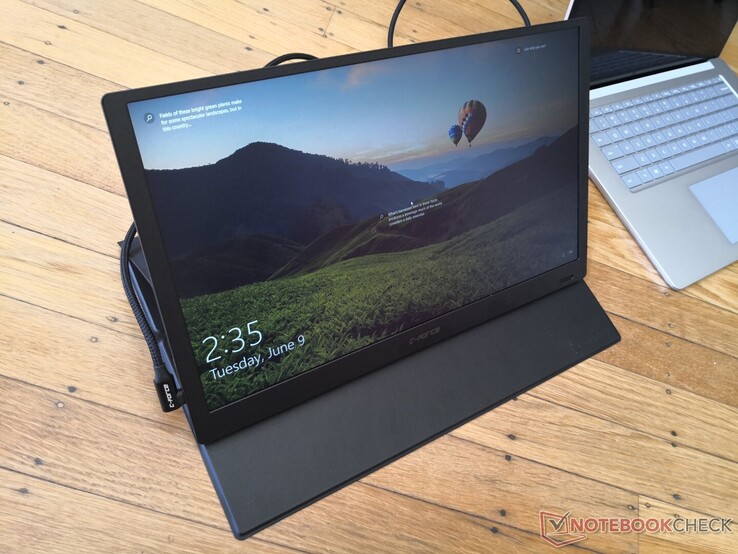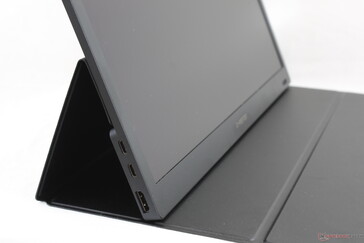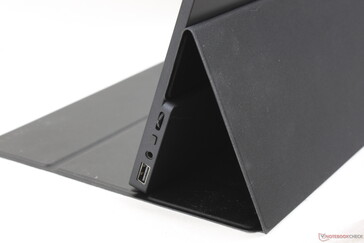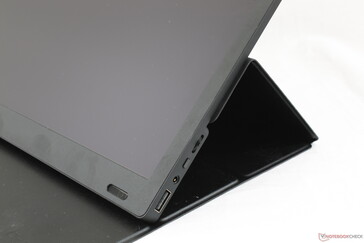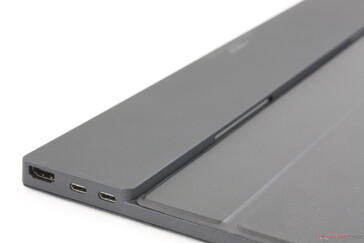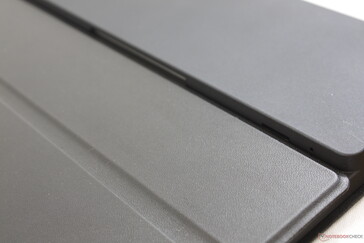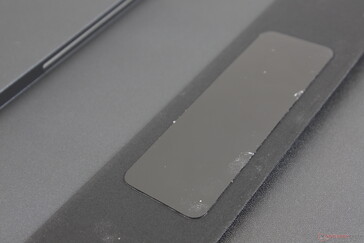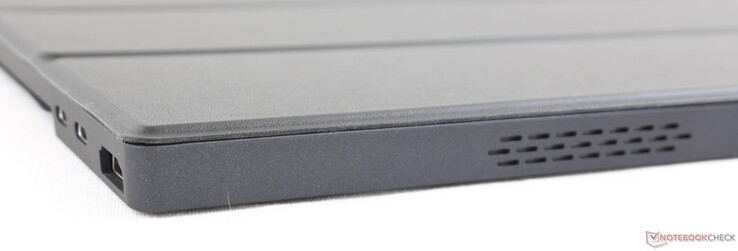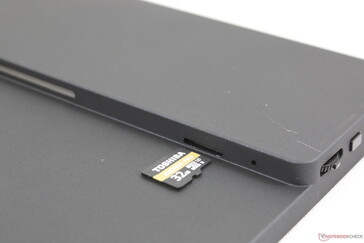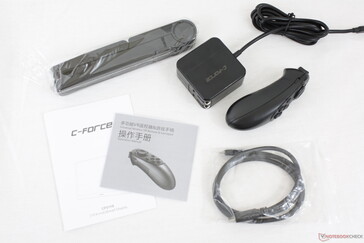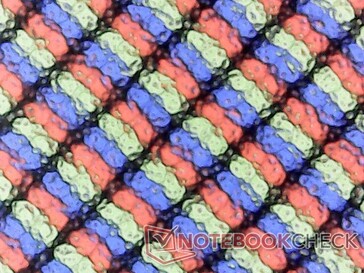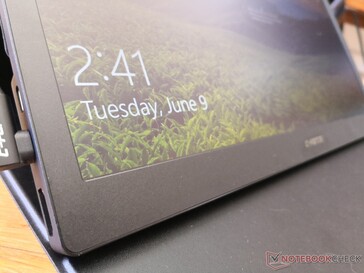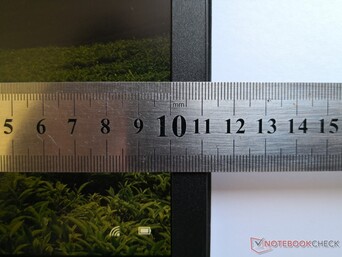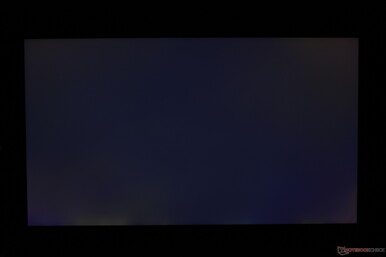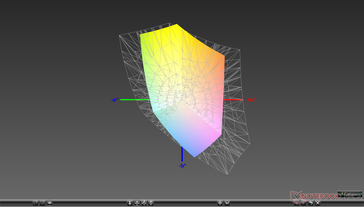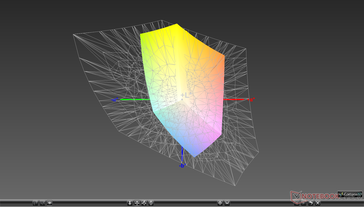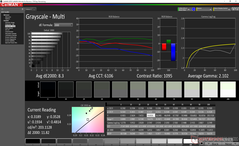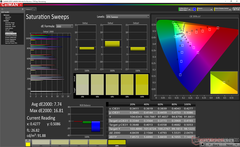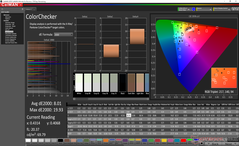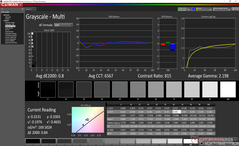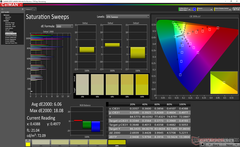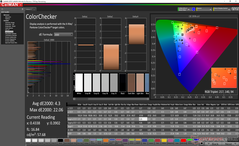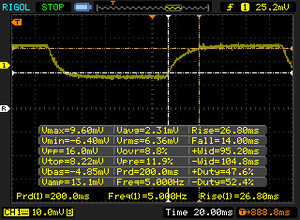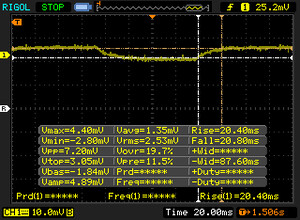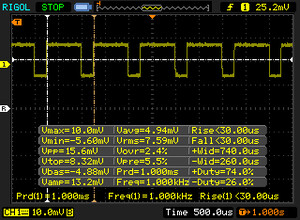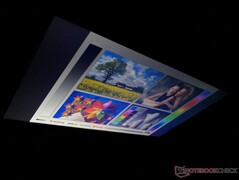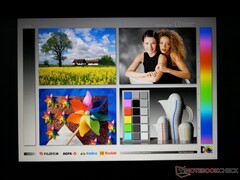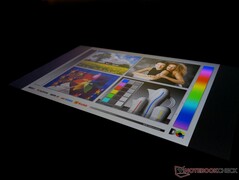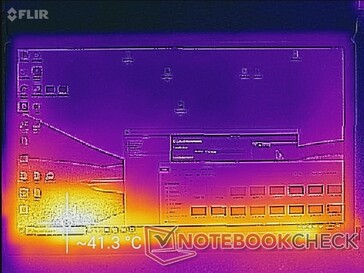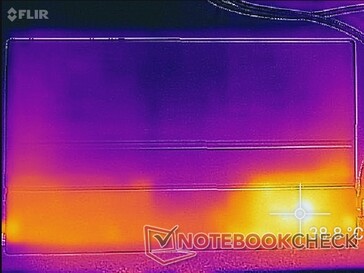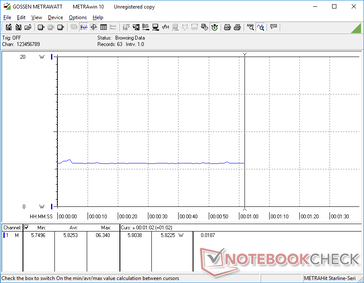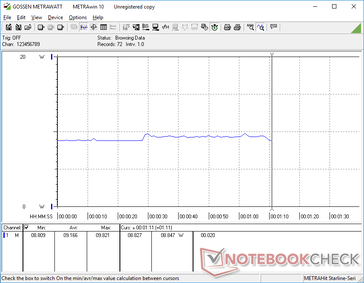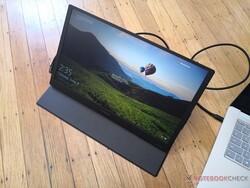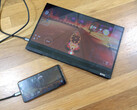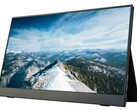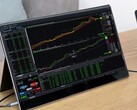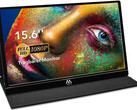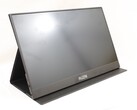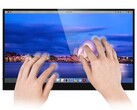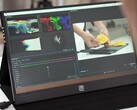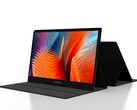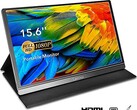C-Force CF011S C-SMART Portable Monitor Review: Great for Home or Flights
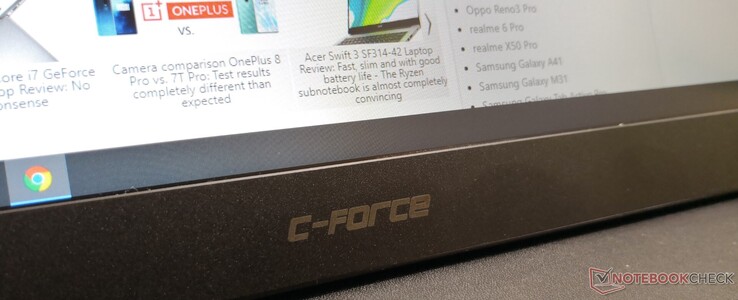
The C-Force CF011S (or C-SMART) is a 15.6-inch portable monitor not unlike the C-Force CF016xT or CF015C. The CF011S differentiates itself by integrating more port options and touchscreen support.
Additional information on the CF011S can be found on its Kickstarter campaign page here. The manufacturer is aiming for a September 2020 launch window and a retail price of $239 USD.
More portable monitor reviews:
| Product Model | CF011S |
|---|---|
| Case Material | ABS + PC |
| Screen Size | 15.6-inch touchscreen |
| Screen Ratio | 16:9 |
| Resolution | 1080p 60 Hz |
| Pixel Pitch | 0.179 mm |
| Viewing Angle | 170 degrees |
| Screen Type | IPS |
| Color Depth | 6-bit |
| Advertised Brightness | 250 nits |
| Advertises Contrast Ratio | 1000:1 |
| Dimensions | 369 x 222 x 6-12 mm |
| Input Voltage | USB-PD, 5 V, 9 V, 12 V, 15 V, 20 V |
| Weight | 750 g |
| Touchscreen | Yes |
| Audio | Yes |
| Price | ~$239 USD |
Rating | Date | Model | Weight | Height | Size | Resolution | Price |
|---|---|---|---|---|---|---|---|
v (old) | 06 / 2020 | C-Force CF011S | 750 g | 12 mm | 15.60" | 1920x1080 | |
v (old) | 01 / 2020 | Auzai ME16Z01 Portable Monitor | 650 g | 9.4 mm | 15.60" | 1920x1080 | |
v (old) | 12 / 2019 | C-Force CF016xT | 990 g | 9.5 mm | 16.10" | 1920x1080 | |
v (old) | 09 / 2019 | MageDok Atlas Gaming Monitor | 1 kg | 8.7 mm | 15.60" | 1920x1080 | |
v (old) | 05 / 2020 | MEMTEQ Type-C Portable Monitor Z1 | 770 g | 8.8 mm | 15.60" | 1920x1080 | |
v (old) | 06 / 2019 | Odake BladeX 4K UHD | 853 g | 10 mm | 15.60" | 3840x2160 |
Case
Connectivity
There are plenty of ports including full-size HDMI, USB 2.0 Type-A, and two USB Type-C ports. Both of the Type-C ports are capable of Power Delivery and data transfer meaning that only one cable is all you need if your PC, laptop, or smartphone supports USB Type-C PD. For example, the monitor only needs one USB Type-C cable for both power and video when connected to our Surface Laptop 3 15, but the monitor will need its own separate power source if connected to a PC with only HDMI ports.
A spring-loaded MicroSD slot is included on the rear of the monitor, but we cannot get it to work for one reason or another. At one point, our card was almost stuck inside of the slot.
Accessories
Included in the box are the following. An HDMI cable was not included in our pre-production packaging, but it will come standard in retail units.
- User's manual
- 45 W USB Type-C AC adapter
- HDMI cable
- Bluetooth VR remote controller
- Arm handle
- USB Type-C to Type-C data and power cable
Display
The best part of the 1080p display is its good contrast ratio of 820:1 according to our own measurements against the advertised claim of 1000:1. Otherwise, this is a budget panel from its narrow gamut to the relatively dim backlight and slow black-white response times. Colors aren't deep enough for professional artists and ghosting is too prevalent for fast-paced 3D games like shooters. The screen is somewhat grainy as well due to the matte overlay.
Pulse-width modulation is present on all brightness levels up to 99 percent. If your eyes are sensitive to flickering, then you may want to avoid this particular monitor or keep it at 100 percent brightness at all times.
| |||||||||||||||||||||||||
Brightness Distribution: 88 %
Contrast: 820:1 (Black: 0.25 cd/m²)
ΔE ColorChecker Calman: 8.01 | ∀{0.5-29.43 Ø4.78}
calibrated: 4.3
ΔE Greyscale Calman: 8.3 | ∀{0.09-98 Ø5}
59.8% sRGB (Argyll 1.6.3 3D)
38.7% AdobeRGB 1998 (Argyll 1.6.3 3D)
42.44% AdobeRGB 1998 (Argyll 3D)
60.3% sRGB (Argyll 3D)
41.08% Display P3 (Argyll 3D)
Gamma: 2.1
CCT: 6106 K
| C-Force CF011S RTK2A3B, , 15.6", 1920x1080 | Auzai ME16Z01 Portable Monitor 15.6", 1920x1080 | C-Force CF016xT 16.1", 1920x1080 | MageDok Atlas Gaming Monitor 15.6", 1920x1080 | MEMTEQ Type-C Portable Monitor Z1 15.6", 1920x1080 | Odake BladeX 4K UHD 15.6", 3840x2160 | |
|---|---|---|---|---|---|---|
| Display | 18% | 57% | 51% | 3% | 107% | |
| Display P3 Coverage (%) | 41.08 | 48.53 18% | 64.2 56% | 62.1 51% | 42.03 2% | 90.5 120% |
| sRGB Coverage (%) | 60.3 | 72 19% | 96.4 60% | 90.7 50% | 63.2 5% | 100 66% |
| AdobeRGB 1998 Coverage (%) | 42.44 | 50.2 18% | 66.3 56% | 64.1 51% | 43.44 2% | 100 136% |
| Response Times | 22% | 55% | 74% | -15% | 22% | |
| Response Time Grey 50% / Grey 80% * (ms) | 41.2 ? | 38.8 ? 6% | 20.4 ? 50% | 10.4 ? 75% | 52 ? -26% | 40 ? 3% |
| Response Time Black / White * (ms) | 40.8 ? | 25.2 ? 38% | 16.4 ? 60% | 11 ? 73% | 42.5 ? -4% | 24.4 ? 40% |
| PWM Frequency (Hz) | 1000 ? | 201.6 ? | 25770 ? | 4950 ? | 1000 ? | |
| Screen | -16% | 34% | -7% | 11% | 44% | |
| Brightness middle (cd/m²) | 205 | 300.7 47% | 214.3 5% | 144.9 -29% | 198 -3% | 371.9 81% |
| Brightness (cd/m²) | 193 | 267 38% | 206 7% | 146 -24% | 198 3% | 366 90% |
| Brightness Distribution (%) | 88 | 77 -12% | 90 2% | 91 3% | 85 -3% | 88 0% |
| Black Level * (cd/m²) | 0.25 | 0.66 -164% | 0.23 8% | 0.78 -212% | 0.2 20% | 0.31 -24% |
| Contrast (:1) | 820 | 456 -44% | 932 14% | 186 -77% | 990 21% | 1200 46% |
| Colorchecker dE 2000 * | 8.01 | 10.26 -28% | 4.34 46% | 5.79 28% | 6.9 14% | 6.36 21% |
| Colorchecker dE 2000 max. * | 19.93 | 22.93 -15% | 6.45 68% | 8.43 58% | 15.9 20% | 10.34 48% |
| Colorchecker dE 2000 calibrated * | 4.3 | 5.05 -17% | 1.12 74% | 2.12 51% | 4 7% | 5.89 -37% |
| Greyscale dE 2000 * | 8.3 | 9.5 -14% | 5.5 34% | 6.7 19% | 5.5 34% | 3.7 55% |
| Gamma | 2.1 105% | 1.51 146% | 2.51 88% | 1.96 112% | 1.59 138% | 2.19 100% |
| CCT | 6106 106% | 8200 79% | 7115 91% | 6295 103% | 7310 89% | 6474 100% |
| Color Space (Percent of AdobeRGB 1998) (%) | 38.7 | 45.8 18% | 60.6 57% | 58.2 50% | 40 3% | 91.7 137% |
| Color Space (Percent of sRGB) (%) | 59.8 | 71.5 20% | 96.2 61% | 90.7 52% | 62.9 5% | 100 67% |
| Total Average (Program / Settings) | 8% /
-5% | 49% /
41% | 39% /
14% | -0% /
6% | 58% /
53% |
* ... smaller is better
Color space is narrow at just 60 percent of sRGB to indicate a budget panel. Colors are not as deep or accurate as most Ultrabooks in the market or even the C-Force CF016xT.
Calibrating the display ourselves would improve grayscale dramatically, but color accuracy remains average at best due to the narrow color space mentioned above. We recommend applying our ICM profile above to get the most out of the display.
Display Response Times
| ↔ Response Time Black to White | ||
|---|---|---|
| 40.8 ms ... rise ↗ and fall ↘ combined | ↗ 26.8 ms rise | |
| ↘ 14 ms fall | ||
| The screen shows slow response rates in our tests and will be unsatisfactory for gamers. In comparison, all tested devices range from 0.1 (minimum) to 240 (maximum) ms. » 98 % of all devices are better. This means that the measured response time is worse than the average of all tested devices (20.2 ms). | ||
| ↔ Response Time 50% Grey to 80% Grey | ||
| 41.2 ms ... rise ↗ and fall ↘ combined | ↗ 20.4 ms rise | |
| ↘ 20.8 ms fall | ||
| The screen shows slow response rates in our tests and will be unsatisfactory for gamers. In comparison, all tested devices range from 0.165 (minimum) to 636 (maximum) ms. » 65 % of all devices are better. This means that the measured response time is worse than the average of all tested devices (31.6 ms). | ||
Screen Flickering / PWM (Pulse-Width Modulation)
| Screen flickering / PWM detected | 1000 Hz | ≤ 99 % brightness setting | |
The display backlight flickers at 1000 Hz (worst case, e.g., utilizing PWM) Flickering detected at a brightness setting of 99 % and below. There should be no flickering or PWM above this brightness setting. The frequency of 1000 Hz is quite high, so most users sensitive to PWM should not notice any flickering. In comparison: 53 % of all tested devices do not use PWM to dim the display. If PWM was detected, an average of 8108 (minimum: 5 - maximum: 343500) Hz was measured. | |||
Emissions
Temperature
Speakers
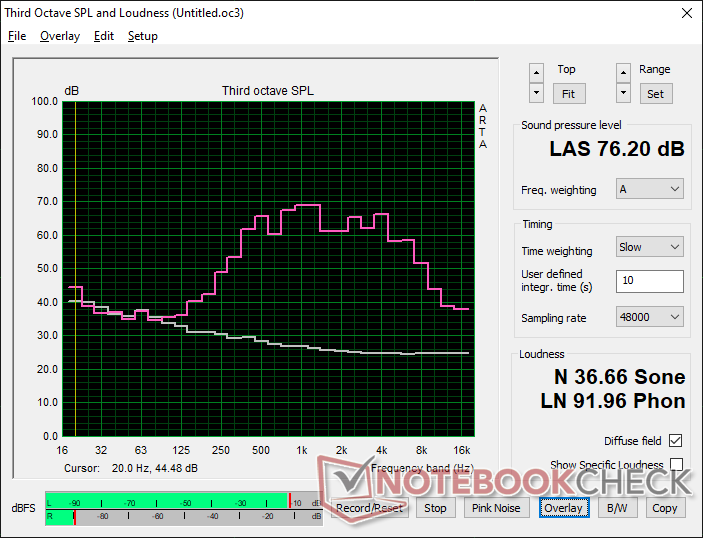
Energy Management
Power Consumption
Verdict
C-Force advertises the CF011S as a portable monitor for presentation, multitasking, gaming, photo editing, working out, and life style environments. Based on our time with the test unit, however, the monitor is best fit for indoor web browsing, multitasking, video playback, and casual gaming or editing. Response times are too slow for intense gaming, colors are not accurate enough for professional photo editing, and brightness is too dim for presentations or most outdoor conditions. This is the type of display you would find on an inexpensive HP Pavilion 15 or Dell Inspiron 15 rather than a high-end HP Spectre, Dell XPS, or Apple MacBook.
Versatility is the key benefit of owning the CF011S. It carries more port options than most other portable monitors and it is one of the few in its category with a matte touchscreen panel. Even so, the mediocre display quality and average brightness are hard to overlook.




